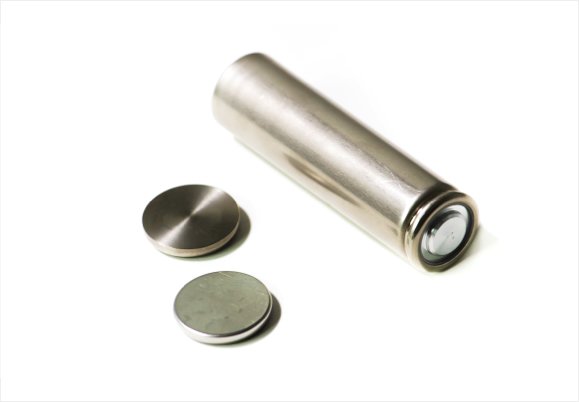A new standard for energy storage
The Ryden dual carbon battery balances a breadth of consumer demands previously untenable by single battery chemistry. An advanced battery is evaluated on four characteristics: performance, cost, reliability and safety.

Current advanced batteries have made great improvement on performance, but have done so by compromising on cost, reliability and safety. Ryden balances this equation, setting a new standard for energy storage.
Safety
Safety is the most important feature of the dual carbon battery. It utilizes the safest high performance battery chemistry ever developed. The dual carbon battery does not use unstable materials such as lithium oxide found in secondary lithium ion batteries.

Additionally it experiences very little temperature change during operation. This thermal stability means no threat of thermal runaway in the dual carbon battery, which can lead to an explosion in other advanced batteries. Additionally, there is no threat of overcharge and it can be 100% discharged without causing damage to the battery.
Performance
The dual carbon battery enables high-performance, high value products coveted by consumers. The battery is energy dense and could enable a 300-mile range electric vehicle. It also charges 20 times faster than the best lithium ion battery available.

The fast charge time of a dual carbon battery could yield even longer-range electric vehicles, as regenerative braking will be more efficient. Even more, the dual carbon battery can be 100% discharged, further extending the length of each usable charge cycle. The dual carbon battery is also more powerful than other advanced batteries, operating at 4 volts.
Cost
For manufacturers the dual carbon battery offers a high-value, high- performance product with no switchover cost. For electric vehicle companies, production simplicity combined with great performance will unlock true mass-market electric vehicles.

The dual carbon battery slots directly into existing manufacturing processes, requiring no change to existing manufacturing lines. Even more, the battery allows for consolidation of the supply chain, with only one active material — carbon. Additionally, manufacturing of the dual carbon battery is under no threat of supply disruption or price spikes from rare metals, rare earth metals or heavy metals. Even more, the thermal stability of the battery eliminates the need for complex battery cooling systems. The dual carbon battery also fits any form factor.
Reliability
The dual carbon battery is the first ever high performance battery that meets consumer lifecycle demand, rated for more than 3,000 charge cycles.
This means an electric vehicle powered by a dual carbon battery will maintain high power and long life after years of use, retaining resale value.

Beyond electric vehicles, the dual carbon battery is capable of operating for years without service in harsh environments for applications ranging from satellites to implantable medical devices.

